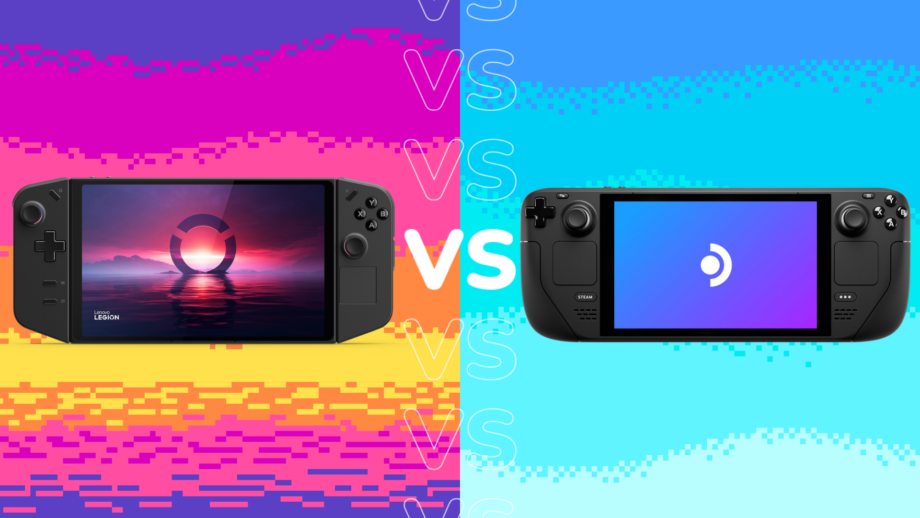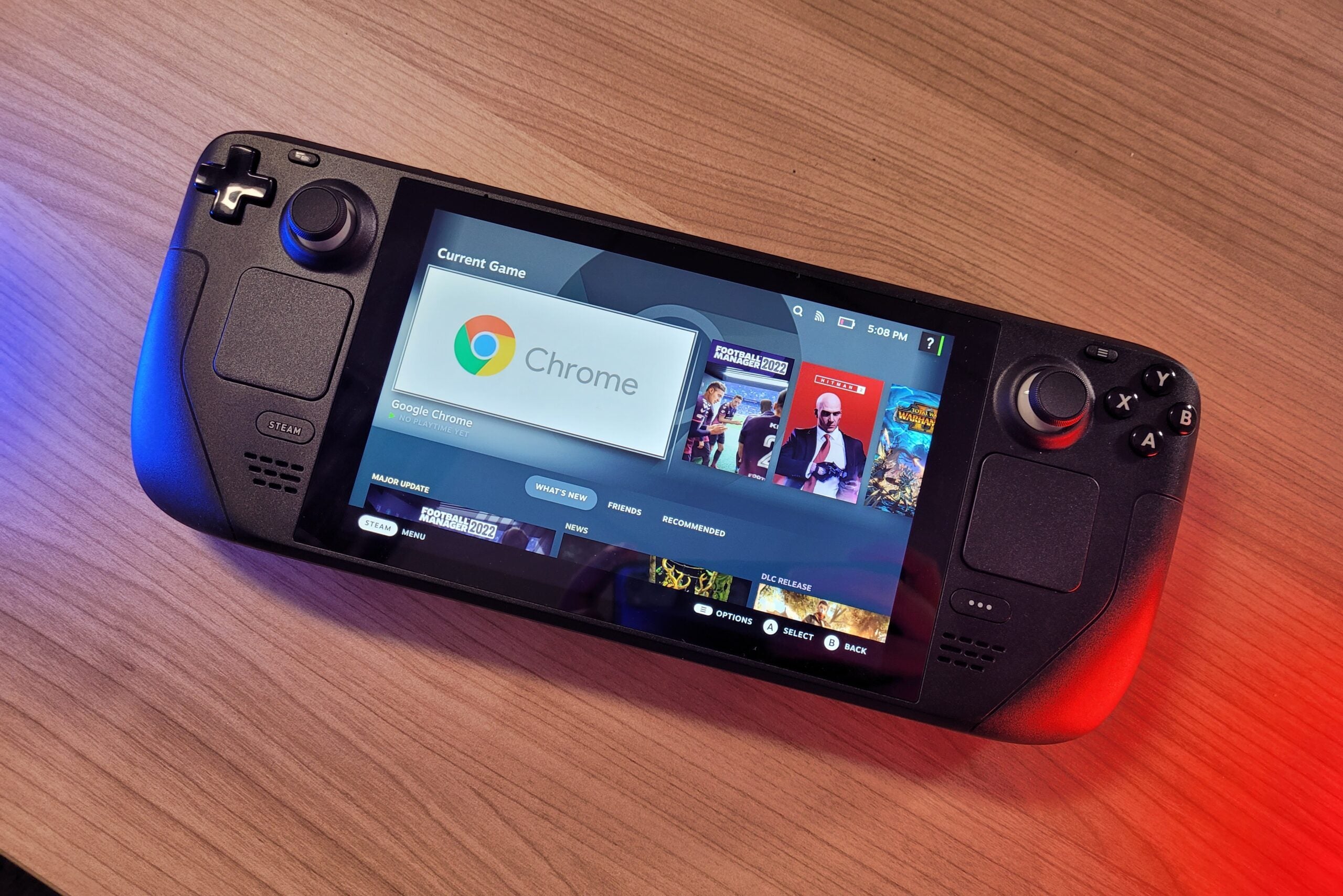Lenovo Legion Go vs Steam Deck: Which gaming handheld is best?

The Steam Deck may not have been the first PC gaming handheld on the scene but it certainly led to an explosion in the market. Many stayed true to the simple Steam Deck formula, but the Lenovo Legion Go tries something different. Here’s how they compare.
We’ve now reviewed both the Steam Deck and the Lenovo Legion Go, putting both devices through their paces for a couple of weeks and beyond. After our thorough testing, we’ve got some key comparisons to make to help you decide which is better for you. This is Lenovo Legion Go versus Steam Deck.
Price and Availability
The Steam Deck OLED is now available but this comparison is going to be focused on the regular models, as we’re yet to complete our review on the latest version.
You can pick the Lenovo Legion Go up for £699/$699, coming with an AMD Ryzen Z1 Extreme chip, 16GB RAM and 512GB SSD inside. That’s the only available configuration currently.
Previously, the Steam Deck was available in three different versions but, now, the OLED model is replacing two of the original LCD models. That means the regular Steam Deck is just available for £349/$399, with a 7nm AMD APU, 16GB RAM and 256GB SSD storage.
It’s a mammoth difference in price, meaning that will very well be a key factor in the model you choose. As we’ll get into, the Legion Go does offer more luxury features for its higher price but, ultimately, the gaming experience is largely comparable in terms of value-for-money.
Display
Coming second only to the price in terms of key points of differentiation with these devices are the displays. The Steam Deck comes with a rather basic 7-inch 800p 60Hz display. Given its size, we weren’t disappointed by this display though, it a similar way to how the original Nintendo Switch is perfectly passable. It’s bright and offers solid contrast too. It just isn’t as good as an OLED, while also offering much lower resolution and refresh rate than the Legion Go.


The Legion Go comes with a huge 8.8-inch QHD+ 120Hz panel, though just like the Steam Deck it is still an LCD rather than an OLED. Nevertheless, the large size makes quite the difference. The Lenovo provides one of the most immersive handheld viewing experience around. However, given the performance limitations, you do rarely take advantage of the full QHD+ resolution and 120Hz refresh rate, but both do still allow higher options than the Steam Deck even when turned down.
Design and Controls
The design of the Lenovo Legion Go are hugely different, beyond both sporting a rather dark colour. The Steam Deck is a no-frills machine, with its chassis feeling sturdy, if a bit cheap. It weighs in at 640 grams and measures 298mm x 117mm x 49mm. Compared that with the Legion Go that is heavier at 854 grams and larger at 298.83mm x 131mm x 40.7mm. However, it is surprising to note that the lower-powered, smaller display Steam Deck is actually the same width as the Legion Go and also comes in at a bit thicker. Neither of these is the most portable handheld around, but the lower weight of the Steam Deck makes it less burdensome to carry.


However, the Legion Go does feel like a higher quality machine to hold. But, that quality doesn’t exist across the entire device. In our reviews, we were impressed by how the controls of the Steam Deck felt, while the Legion Go did disappoint in how satisfying the buttons were to use. The Legion Go does offer more buttons to customise your experience as well as the benefits detachable controllers bring.

But, to again emphasise quality, the detaching mechanism is far from smooth, even if the controls do bring some delightful freedom. The FPS mode, for using the right detachable controller as a joystick-like device, does work excellent in games that require fast twitch responses though.
Performance and Software
Across our range of tests, we found gaming performance across these devices to be surprisingly comparable, with Valve having done an excellent job in optimising its machine. There was typically just a small advantage of between 2-5fps across many titles when playing at the Steam Deck’s maximum FHD+ resolution. That’s quite a big win on value for Steam Deck, given the huge difference in price. However, the Legion Go does offer access to higher resolutions and faster refresh rates.
On the software side of things, the user experience is a clear win for SteamOS. The streamlined experience is far easier to navigate then the Windows-based Lenovo handheld and its generally poor Legion Space first-party software. But, the Lenovo does give you wider access to a range of gaming platforms, like the Xbox app and more.
Battery Life
The lower demands of the hardware inside the Steam Deck do enable a longer battery life than the Lenovo Legion Go. Across AAA titles, we found the Lenovo to last around 90 minutes while the Steam Deck could stretch to two hours. Both handhelds can greatly stretch their battery life in lower demand games, but we were able to eek more out of the Steam Deck at around eight hours.
Verdict
Across most key features, the Steam Deck is absolutely the better buy. For around half the price, you get similar performance, more satisfying controls, a smoother user experience and a lighter weight.
However, the Lenovo Legion Go brings certain hardware that helps it stand out from the crowd, and you can only access it by paying the higher price. The stand out features are that bigger display with its higher resolution and refresh rate, as well as the freeing detachable controls.

